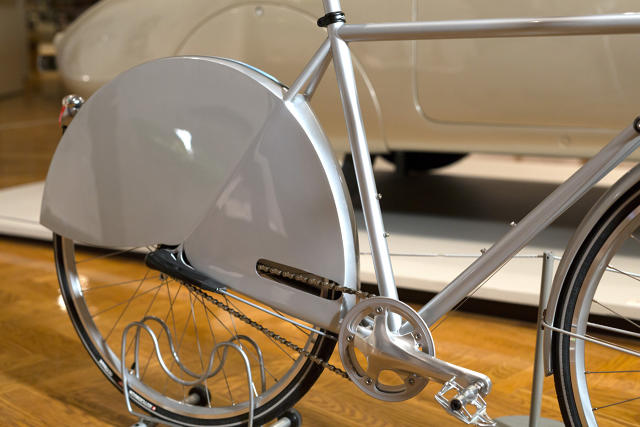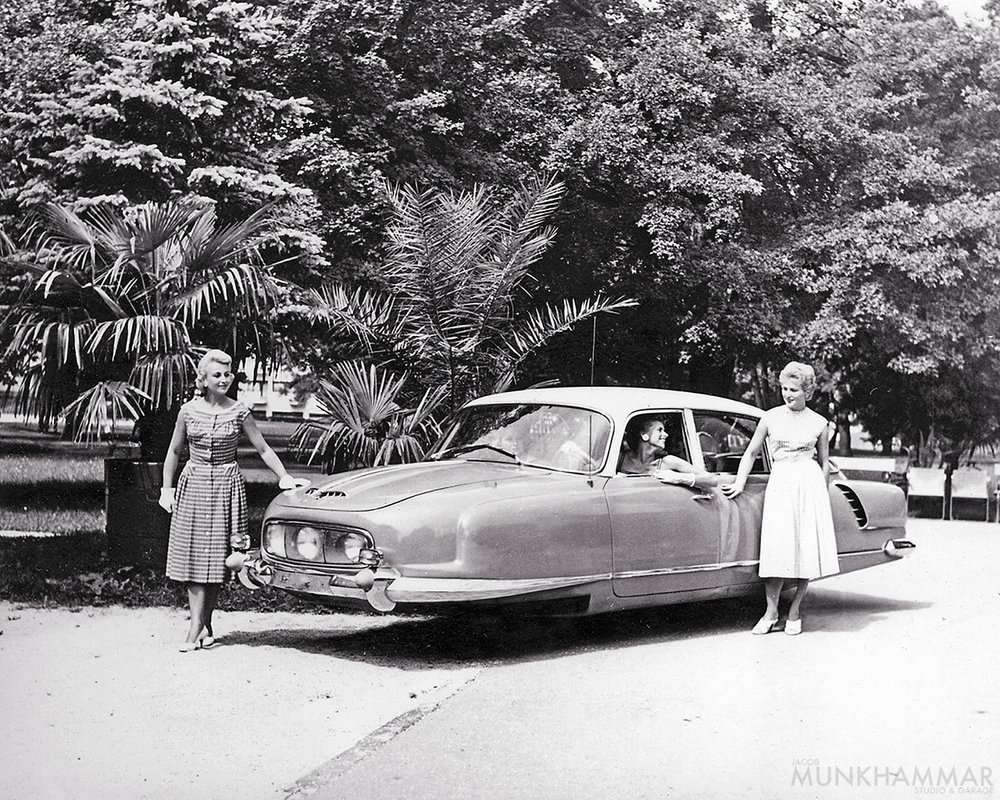Historical means of transport – car Tatra 87
Release Date: 21st September 2016
Name of issue: Historic Transport: Tatra 87
Nominal value: CZK 16
Catalog number: 903
Graphic design: Vaclav Zapadlík
Print sheets: 50 stamps in a check register: 25 + 25 pcs car biplane
Image Dimensions stamp: 40 x 23
Type of print: full color offset
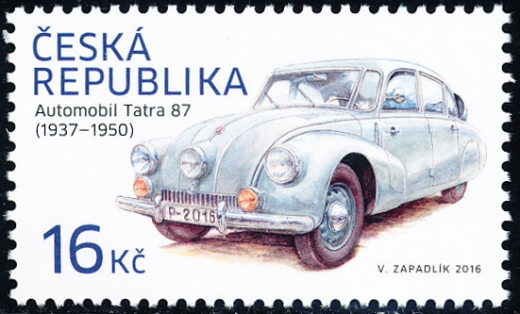
Mark Story:
Tatra 87 car is higher grade manufactured by Tatra Czechoslovakia from 1937 to 1950. It is a luxury aerodynamic car, the successor to the Model T 77 A. Its quality demonstrated Tatra 87 in 1947-1950, when this car silver undertook Jiri Hanzelka and Miroslav Zikmund trip to Africa and South America. According to the US newspaper The New York Times is a collectible car of 2010, beating strong competition 651 cars. In 1936 they produced the first two prototypes of the T-87 for tests and in 1937 another five cars test series. Tatra 87 was officially introduced in 1937. Since 1938 he has produced T-87 series. In 1940 they were produced and two convertibles for possible use in the military. After the war he continued serial production of T-87 with minor changes to the bodywork until the 1950s.
(Source www.cpost.cz)
FDC – first day cover:
The stamp is issued a first day cover and a special postmark.
(Source www.cpost.cz)
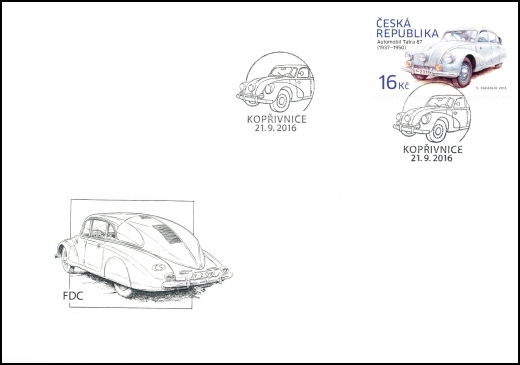

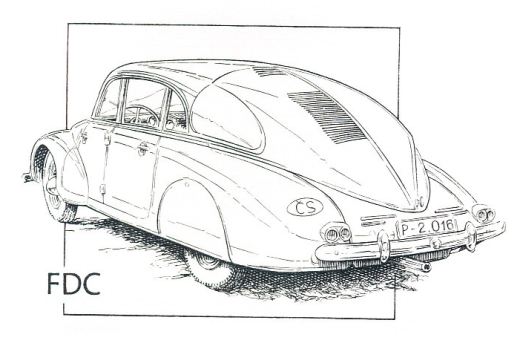
Editor’s Note:
You’ll notice a new way of publishing news. Our goal is to have the broadest possible information and images all available philatelic material.Let us know how you are new articles about news glossed over.
News for nominal:
new in our shop, we offer a new postage stamp CR for nominal. This particular stamp purchased here at this link.
http://www.infofila.cz/historicke-dopravni-prostredky-automobil-tatra-87-r-2-c-5735

As much as we venerate men like Harley Earl, Bill Mitchell, Virgil Exner, and Dick Teague as characters who shaped what an American car meant during America’s automobile-centric century, Raymond Loewy and Brooks Stevens—industrial designers who dabbled in automobiles—defined the midcentury American aesthetic. The French-born Loewy drew inspiration from transport, and, of course, his Studebaker Avanti resembled a late-1970s automobile, despite first reaching the world in 1962. But Loewy, born in 1893, was first romanced by trains. His younger peer Brooks Stevens grew up with the car, and this particular 1930 Cord can be seen as the industrial design titan’s first automotive project—albeit one he modified for himself.
Stevens acquired the car during his stint as a design student at Cornell and set about repurposing it as a proper sportsman’s automobile. The L29 features a golf-clubs compartment, no top, and no wipers. Stevens was apparently a fair-weather sportsman. The Cord’s small gauges were replaced with a custom gauge cluster featuring units with larger, easier-to-read faces. The at-a-glance legibility proved handy during the hill-climbs the young designer enjoyed competing in. The standard L29’s clamshell fenders gave way to skirted units, and Stevens deleted the running boards for a more wasp-waisted look. Woodlite headlamps, common on Ruxtons of the era, replaced the stock units, and Stevens swapped the basic Cord radiator cap for a winged ornament of his own design.
The rear dorsal fin is roughly contemporaneous with the similarly equipped Tatra 77, though its smooth profile is more reminiscent of the unit on the later, more organic T87. Though the body is fundamentally prewar American, Stevens’s special suggests both postwar hot rods and customs, and it offers little hints of what was to come from the American auto industry two decades later. Stevens owned the car until his death in 1995. Two years later, Ed and Judy Schoenthaler purchased the car from the designer’s estate, with the promise that it’d be restored just as Stevens had designed it.
Fresh off the resto, it bowed at Pebble Beach in 2000. This year, it took home Best of Show at the 20th annual Amelia Island Concours d’Elegance. Cords are
utterly fascinating automobiles in their own right, but given the machine’s provenance and its place in the history of American industrial design, it could be argued that Stevens’s Cord was the most important car on the lawn yesterday. It’s fitting that it rolled off with the most important trophy. Not convinced? Think of it this way—this car ultimately led to the Willys Jeepster,
the Wienermobile, today’s full-dress Harley-Davidsons, and Fleetwood Mac founder Peter Green’s
beloved Miller High Life guitar. If that’s not cultural relevance, what is?
http://blog.caranddriver.com/the-champagne-of-cords-brooks-stevens-speedster-wins-2015-amelia-island-concours/
Kopřivnice museum exhibits unique tricycle with a motor Tatra
Visitors to the Technical Museum in Kopřivnice on Novojičínsko can now see a unique tricycle Trike Tatra V8 3.5 Kobra.
František Chmelař tricycle made from Roznov that the machine used for remanufactured engine from the passenger car Tatra 613. The machine made in 2012 is over four meters long and about two meters wide. It can reach speeds of up to 220 kilometers per hour. “My hand knocking body covered in imitation snakeskin. Its equipment includes a large suitcase, navigation and reversing camera on,” said spokeswoman Lucie Petříčková Kopřivnice city hall.
František Chmelař said that the production of tricycles would involve approximately 2,500 hours of work. The Tatry has except the engine and transmission, and part of the rear axle. The production was complicated by Chmelař practically everything. “I do not do it under any plan, something I need to create a few times. When I make something, and now to me it does not like, I have to tread down and do it again,” he said. A few times a tricycle manufactured to order, but since it has dropped. “I’ll do one, or sell and do more,” said Chmelař.
Kobra is the ninth tricycle, which snapped out of his workshop. Each was different, different accessories, body shape, method of control. “I more or less as a hobby. I like motorcycles, and historic, once I got into tricycles and since then I do, organize events,” said Chmelař.
Visitors to the museum can see a tricycle Kobra just a few months. “The last April, pick her up and go rajtovat the roads,” said Chmelař. Petříčková added that machine you can buy any candidate. Its value is 1.5 million.
Tatra Technical Museum is open from Tuesday to Sunday 9:00 a.m. to 4:00 p.m.. Entrance for adults is 120 crowns, children, seniors and students pay 80 crowns.
Wrong?
Kopřivnice museum exhibits unique tricycle with a motor Tatra
Visitors to the Technical Museum in Kopřivnice on Novojičínsko can now see a unique tricycle Trike Tatra V8 3.5 Kobra.
František Chmelař tricycle made from Roznov that the machine used for remanufactured engine from the passenger car Tatra 613. The machine made in 2012 is over four meters long and about two meters wide. It can reach speeds of up to 220 kilometers per hour. “My hand knocking body covered in imitation snakeskin. Its equipment includes a large suitcase, navigation and reversing camera on,” said spokeswoman Lucie Petříčková Kopřivnice city hall.
František Chmelař said that the production of tricycles would involve approximately 2,500 hours of work. The Tatry has except the engine and transmission, and part of the rear axle. The production was complicated by Chmelař practically everything. “I do not do it under any plan, something I need to create a few times. When I make something, and now to me it does not like, I have to tread down and do it again,” he said. A few times a tricycle manufactured to order, but since it has dropped. “I’ll do one, or sell and do more,” said Chmelař.
Kobra is the ninth tricycle, which snapped out of his workshop. Each was different, different accessories, body shape, method of control. “I more or less as a hobby. I like motorcycles, and historic, once I got into tricycles and since then I do, organize events,” said Chmelař.
Visitors to the museum can see a tricycle Kobra just a few months. “The last April, pick her up and go rajtovat the roads,” said Chmelař. Petříčková added that machine you can buy any candidate. Its value is 1.5 million.
Tatra Technical Museum is open from Tuesday to Sunday 9:00 a.m. to 4:00 p.m.. Entrance for adults is 120 crowns, children, seniors and students pay 80 crowns.
Wrong?










